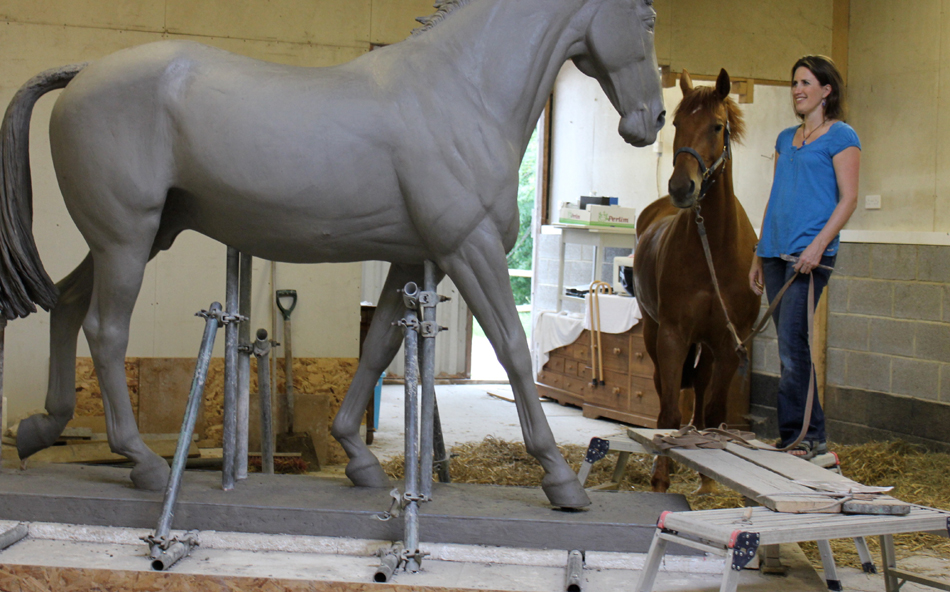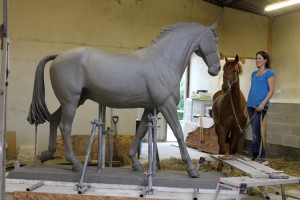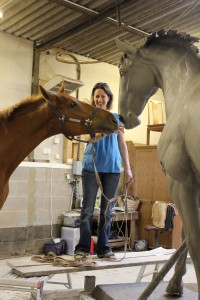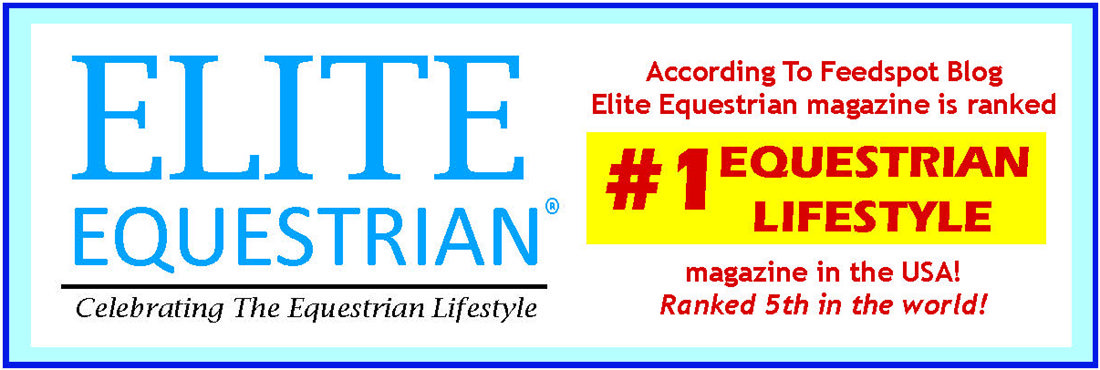
Sefton commemorated at the Royal Veterinary College with unveiling of new life-size bronze
On Wednesday 16th October, Her Royal Highness, Princess Anne, will unveil a new life-sized bronze of the Household Cavalry horse Sefton at the Royal Veterinary College (RVC) in North Mymms, Hertfordshire. 
The statue of Sefton is sited outside the College’s Teaching and Research Centre, standing on the footprint of the former Sefton Equine Hospital, a facility which has now been relocated to a new Equine Referral Hospital on campus.
Sefton suffered terrible injuries in the Hyde Park bombing of July 1982 in which four men and seven horses died. In the aftermath of the bombing, as the most severely injured horse, his story of recovery captured the nation’s hearts and the horse came to symbolise the resilience that is characteristic of the armed forces.
Many who knew and rode Sefton have provided the detailed briefings necessary for the sculptor, Camilla Le May, to capture the character and spirit of a great horse. Camilla said: “It was fascinating to talk to those who rode and knew Sefton well and this, along with studying old photos, enabled me to find out some of his individual traits such as the way he often tilted his head, looking back over his shoulder, which I chose to represent in this work. He was by all accounts a strong character and quite a handful, especially in his youth. Perhaps it was partly this strength of character that helped him pull through his appalling injuries.”
The College has a long and respected history of providing quality, specialist care for horses, delivered today by the internationally renowned Equine Referral Hospital based at the Hawkshead Campus, fully equipped with state-of-the-art surgical, medical, diagnostic and critical care facilities. Alongside this is a first opinion equine practice providing a full range of diagnostic treatment services in the client’s yard and with full back up of the Hospital’s specialist services.
Professor Josh Slater, head of the equine clinical group at the RVC, said: “The College has a proud tradition of furthering care and developing innovative treatments through dedicated equine veterinary surgeons and nurses. We were proud to have received a grant from The Horse Trust in 1986 to build our former equine hospital in Sefton’s memory. Whilst we may have moved our practice to bigger and better facilities this new statue will serve as a reminder of the bravery and resilience of Sefton that inspired so many.” 
Professor Stuart Reid, Principal at the RVC, said: “I would like to thank the generosity of our friend Lord Ballyedmond for his kind donation in recognition of our esteemed colleague Professor Lees that has enabled us create this statue in memory of a great horse”
Generously funded by RVC Honorary Fellow and Chairman of Norbrook Lord Ballyedmond OBE, the statue was commissioned to recognise and honour the life-time achievements of one of the College’s longest servicing senior academics Professor Peter Lees, who retired in 2010.
Founded in 1791, The Royal Veterinary College is the first and largest veterinary school in the English speaking world and a constituent College of the University of London. It also provides support for veterinary and related professions through its three referral hospitals, diagnostic services and continuing professional development courses. http://www.rvc.ac.uk
Dr. Edward Enda Haughey, The Right Honourable the Lord Ballyedmond OBE founded Norbrook Laboratories in 1969. Norbrook is a global leader in the development of revolutionary veterinary and animal health medicines based in Newry, Northern Ireland with manufacturing facilities in four continents, employing 3000+ people worldwide. Lord Ballyedmond is Chairman and CEO of Norbrook and Honorary Fellow of the Royal Veterinary College.
Peter Lees is Emeritus Professor of Veterinary Pharmacology at the Royal Veterinary College and a pharmacologist with interests and expertise in basic and applied veterinary aspects of the discipline. His research interests have spanned the fields of renal pharmacology, the pharmacology of drugs acting on the C.N.S., inflammation, anti-inflammatory drugs, cartilage biology and antimicrobial chemotherapy. His current principal research interests are in the fields of antimicrobial and anti-inflammatory drugs.
The College commissioned its inaugural Artist in Residence, Camilla Le May to sculpt Sefton. Camilla specialises in animal subjects and her work is represented by established galleries (Rountree Tryon, London and the Everard Read Gallery, Johannesburg) and has been bought by private collectors worldwide. For more information on Camilla and her work please visit www.camillalemay.com and more specifically see the following link for a detailed report on the making of the Sefton: http://www.camillalemay.com/blog/2012/07/17/sefton-project-for-the-royal-veterinary-college/
The Horse Trust, founded in 1886, is the oldest horse charity in the UK. Based at Speen, Buckinghamshire, it provides a place of retirement for working horses.1986, the charity’s 100th year, saw the opening of the Sefton Equine Referral Hospital Surgery Wing and the Home of Rest for Horses Loose Boxes by HRH The Princes Royal at the Royal Veterinary College (RVC), London with the award of a welfare grant of just over £300,000.



